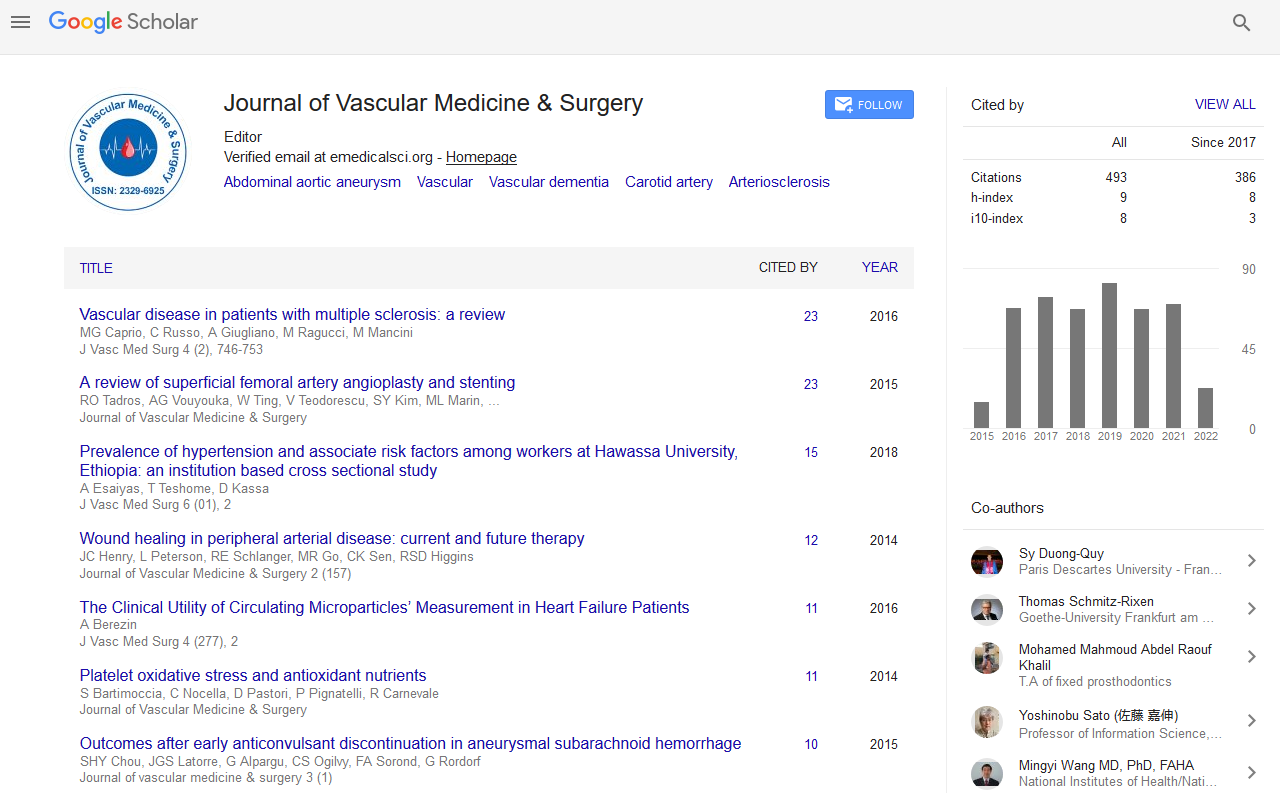Indexed In
- Open J Gate
- Academic Keys
- RefSeek
- Hamdard University
- EBSCO A-Z
- OCLC- WorldCat
- Publons
- Euro Pub
- Google Scholar
Useful Links
Share This Page
Journal Flyer

Open Access Journals
- Agri and Aquaculture
- Biochemistry
- Bioinformatics & Systems Biology
- Business & Management
- Chemistry
- Clinical Sciences
- Engineering
- Food & Nutrition
- General Science
- Genetics & Molecular Biology
- Immunology & Microbiology
- Medical Sciences
- Neuroscience & Psychology
- Nursing & Health Care
- Pharmaceutical Sciences
Abstract
Long-term outcome of acute ischemic stroke with unruptured intracranial aneurysm treated by intravenous thrombolysis
Justyna Derbisz, Pawel Brzegowy, Roman Pulyk, Jeremiasz Jagiella, Anna Grochowska and Agnieszka Slowik*
Background: There are scarce data on long-term outcome of Acute Ischemic Stroke (AIS) with Unruptured Intracranial Aneurysms (UIAs) treated with Intravenous Thrombolysis (IVT). We studied the clinical characteristics of 10 Caucasians with AIS with UIAs treated IVT.
Methods: We analyzed data from a hospital-basedregistry. The standardized diagnostic work-up included: demographics; stroke risk factors; stroke etiology; stroke severity and treatment. Outcome measures were hemorrhagic complications, mRS on discharge, day 90 and up to 56 months.
On admission all participants had performed the radiological work-up, including Computed Tomography (CT) with and without contrast, perfusion CT, angio-CT of intra and extracranial vessels, and arch of aorta.
Results: We analyzed data from 362 patients; among them 330 had the standardized radiological work-up. Ten patients with UIAs were older as compared to others, and were more often females. UIA was located on the vessel affected by AIS in 2 cases; 1 patient developed brain hemorrhage not related to UIA;mRSon day 90 was as follows: 0 (n=3); 1 (n=2); 2 (n=2); 3 (n=1); 6 (n=2). Eight cases were alive up to 56 months. In 9 cases the aneurysm size varied from 2-6 mm; in one case-was 12 mm. Literature shows only 9 cases with the UIA sized >10 mm treated with IT.
Conclusion: Introducing expanded radiological diagnostic work-up before treatment decision of AIS in the era of different etiological treatment options, allows not only to detect the size of penumbra, clot location but also the presence of vascular malformations, including IUAs0.
Published Date: 2020-11-06; Received Date: 2020-09-16


